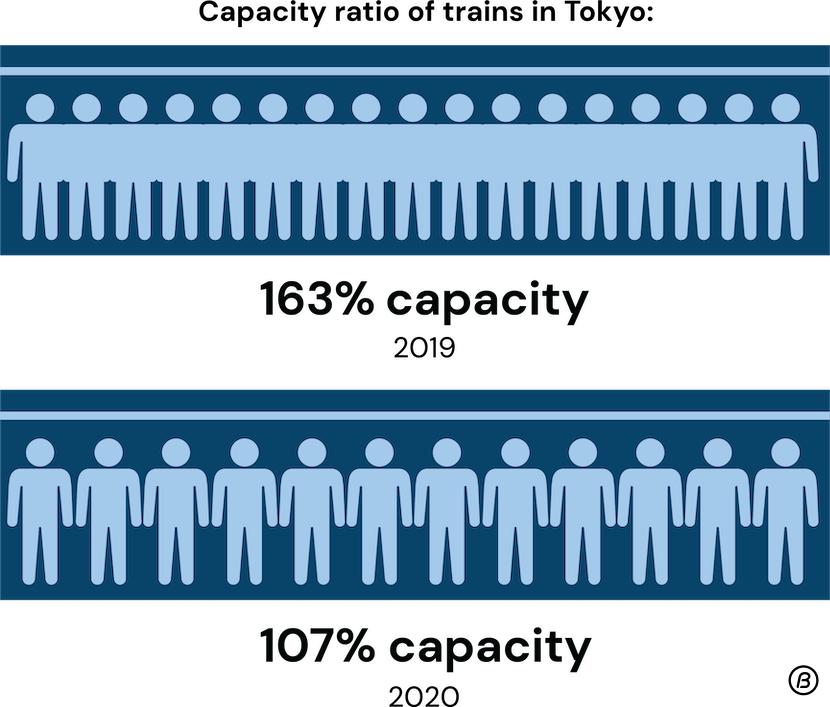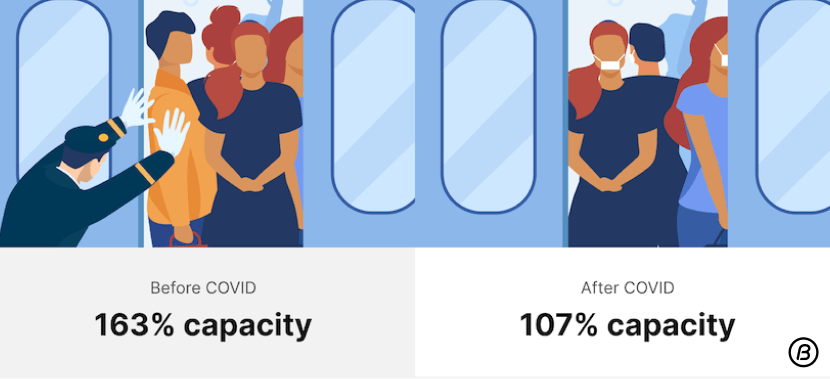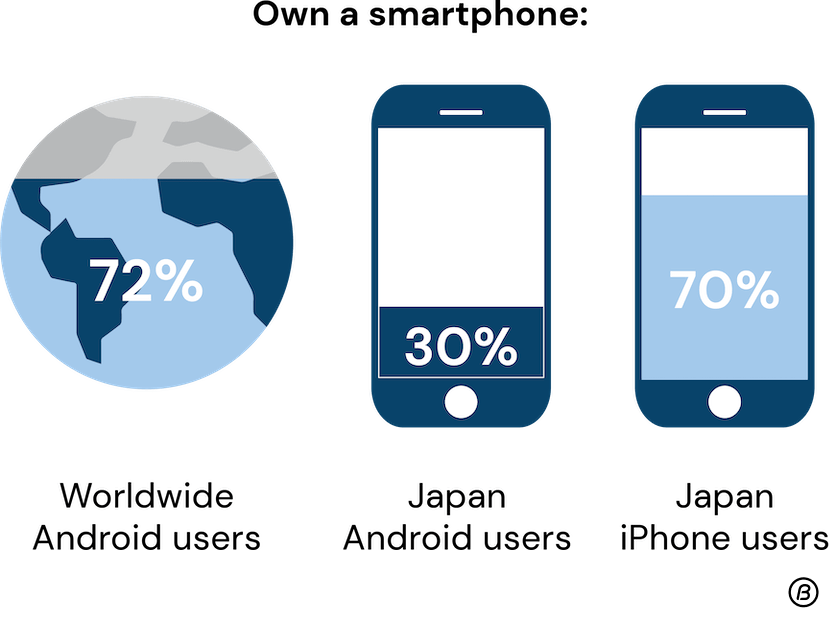
Btrax Design Company > Freshtrax > The current 7 f...
The current 7 facts to learn about Japan after COVID
It is always interesting to examine how statistics change over time, especially while living through a global event like the COVID-19 pandemic that is changing the course of history before our very eyes.
New norms, lifestyle changes, and other trends caused by the pandemic are naturally fascinating to witness firsthand, but they are also statistically intriguing.
Of course, some shifts in how we’ve been carrying out our daily lives are merely temporary and will eventually stabilize, but other aspects have changed completely and may never go back to the way they used to be.
Our new ebook, “100 Facts to Understand the Motivations Behind Japanese Behaviors” was based on some data published in 2017-2018. This time, we at btrax have compiled data from 2020-2021 including post-COVID statistics, and added our thoughts and analysis.
Don’t worry – even if you are not familiar with pre-pandemic statistics on Japanese behavioral trends, you’ll find plenty of background knowledge and updated information in this article.
The current 7 facts to learn about Japan after COVID
1. How WFH works in Japan
Remote work, commonly referred to by the acronym WFH (Work From Home) in Japan, is a trend that has gained traction around the world and has been managing to make people work both more and less.
Those allowed to work remotely in Japan tend to work more hours and find it difficult to draw a clear line between their work and personal life.
These workers also tend to lack opportunities to stay physically fit and have limited communication with their coworkers.
Those who are allowed to work from home still feel that they need to go to the office due to the pressures of traditional Japanese work culture.
Lots of paperwork makes workers feel that they need to go to the office despite the Japanese government’s attempts at carrying out workstyle reform (働き方改革).
Furthermore, Japan is lagging behind in implementing flexible and secure IT systems.
In some industries, such as financial services or insurance companies, management doesn’t want to have any risk of customer data leaks, so employees are not allowed to bring their work computers outside of the office.

30.8% of companies allow employees to work from home in Japan (Ref: Ebook , Section Employment & Work Environment)

Working from home is challenging
2. Konbini (convenience store) is essential in Japan
Japanese “Konbini” (convenience stores) are well known as places where you can purchase every daily necessity from rice balls to underwear and access a myriad of services from sending packages to purchasing insurance.
Their revenue during COVID-19 has actually increased thanks to dining and drinking at home.
As Japan is still a country where people tend to pay with cash rather than a card, convenience stores have begun to implement cashier machines that you can pay without coming into contact with staff as a COVID safety measure.

People can pay without physical contact (Ref: Ebook , Section Efficiency & Transportation)
3. 107% capacity in trains in Tokyo after COVID
You do not need to own a car if you live in Tokyo and people are becoming even less interested in owning cars now.
Public transit is very well-established in Japan and people tend to commute by train.
The capacity ratio in Tokyo trains after COVID has changed drastically, dropping from an average of 163% in 2019 to 107% in 2020 (which is still above capacity).
However, this is likely to be a temporary trend.
Another visible transit shift post-COVID is that more people have been commuting by bicycle to avoid any risk of infection and to get more exercise.

Ref: Ebook , Section Efficiency & Transportation

The train is still over capacity after COVID
4. Cult-like devotion to Apple products
This is not a fact related to COVID, but Japanese people are the biggest fans of Apple products at any given time.
It is truly a cult-like devotion. As you might expect, Japan also has the fewest Android users in the world.

Comparing the number of users of iPhone and Android (Ref: Ebook , Section Digital Experiences)
5. COVID accelerated shopping online
More people have been shopping online than before COVID.
Average yearly online shopping has increased from 19.8 times in 2018 to 22.1 times in 2021, especially among people in their 30s and 40s. On average, 68% of Japanese shop online in general.
Half of them don’t check the products in person but make the decision to buy products sight-unseen online.
This result would include the fact that people’s purchasing behavior is more flexible between online and offline.

Ref: Ebook , Section Leisure & Entertainment

More people complete their purchasing online
6. People are getting through COVID with the universal healthcare system
Japan is well known for its universal healthcare system.
The total number of hospitals in Japan in 2016 was 8,400, which is 1.5 times the number of hospitals in the U.S.
The number of beds is 13/1,000 people in Japan while it is 2.9/1,000 in the U.S.
On the other hand, there are only 2.5 doctors/1000 people in Japan. This is the 28th in the world.
There was a troubling lack of doctors during the height of the COVID-19 pandemic in Japan.

Ref: Ebook , Section Health & Diet

Ref: Ebook Section Health & Diet
(7) Quality of life is been considered more important
As in the rest of the world, people in Japan are becoming more aware of quality over quantity.
More time spent at home has given people a chance to be mindful of their quality of life.
People have been spending more money on buying green tea or coffee and enjoying high-quality beverages at home.

People choose better quality products (Ebook , Section Health & Diet)

People enjoy making coffee at home (Ebook , Section: Health & Diet)
These are just seven of many facts included in our newly updated ebook.
There is plenty more fascinating and valuable information found here in our full ebook. Please check our website and download the publication for free!







